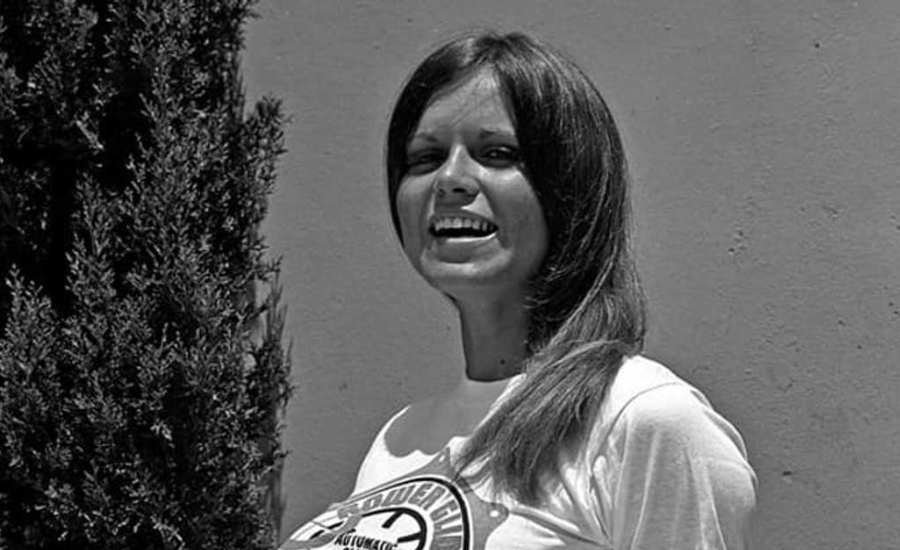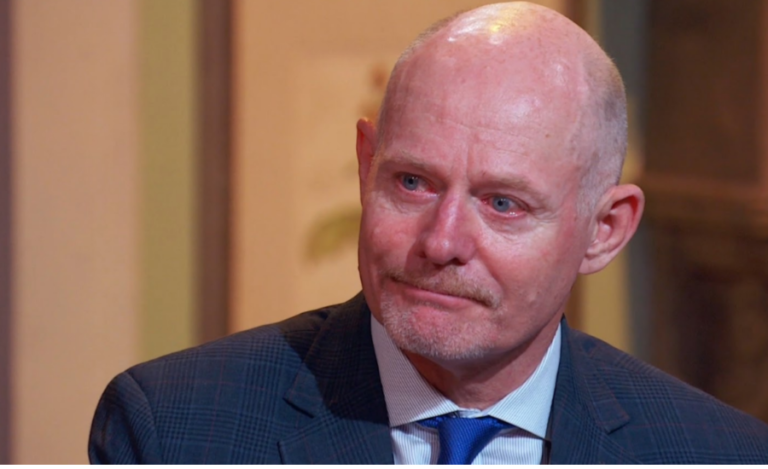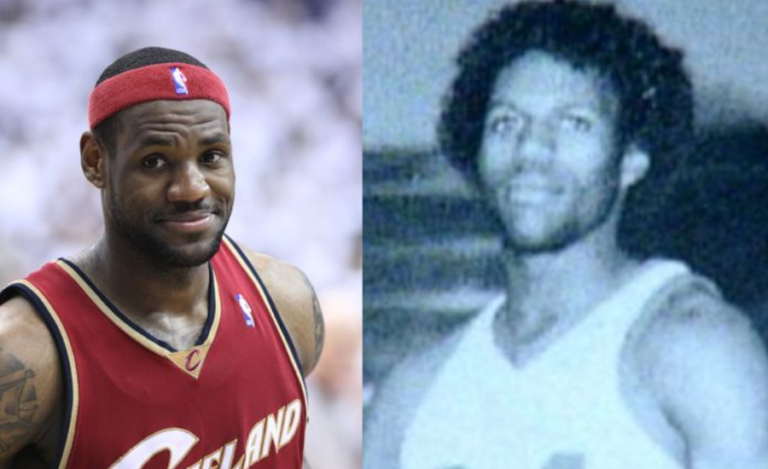Barbara Roufs: The Glamorous Queen Of Drag Racing
Barbara Roufs was an iconic figure in 1970s drag racing, remembered not only as a trophy girl but as a symbol of beauty, change, and empowerment in a sport driven by speed and competition. Her presence brought a touch of glamour to the high-adrenaline world of drag racing, leaving a lasting impression on fans and racers alike. Beyond her role in the spotlight, her influence reflected the shifting cultural landscape of the era. Though her life ended in tragedy, her legacy continues to be celebrated by those who remember her impact on the sport and the racing community.
Who Is Barbara Roufs?
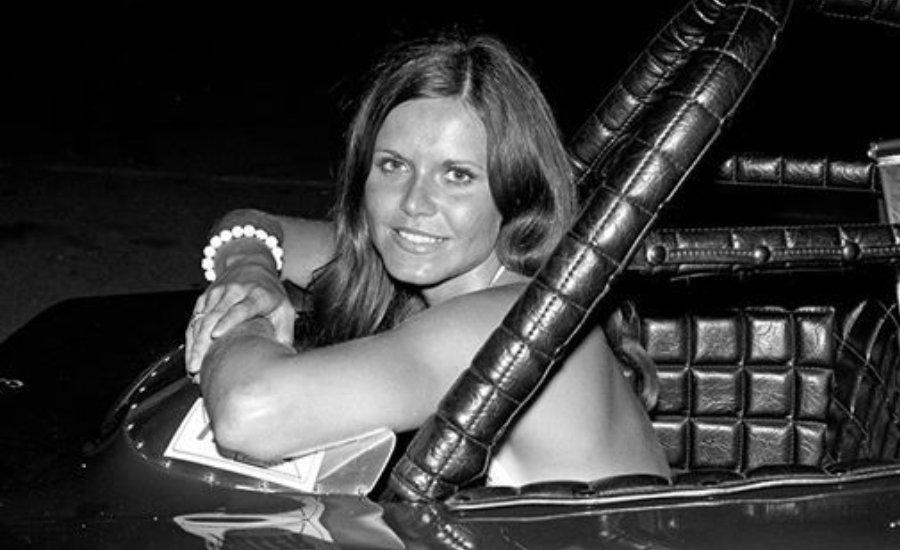
Barbara Roufs was a vibrant and charismatic presence in the drag racing scene of the 1970s, best known for her role as a Trophy Girl. While she was initially recognized for presenting awards to winning racers, her impact on the sport extended far beyond that title. With her radiant smile, undeniable charm, and striking sense of style, she became a cultural icon in an era when motorsports were largely dominated by men. Her presence helped bring a fresh, glamorous appeal to drag racing, capturing the attention of a broader audience and making the sport more accessible to fans beyond just hardcore racing enthusiasts.
More than just a beautiful figure on the sidelines, Barbara embodied the spirit of drag racing with her infectious energy and genuine enthusiasm for the sport. She was a key part of the exhilarating atmosphere at races, adding an element of excitement and celebration that resonated with both competitors and spectators alike. Her unique blend of confidence and warmth made her a beloved personality in the racing community, and her contributions to the sport went beyond the glitz and glam—she helped shape its identity during a transformative period.
Although her time in the spotlight was relatively brief, Barbara’s legacy in drag racing remains significant. Her influence helped shift perceptions and paved the way for a more inclusive and engaging racing culture. Even decades after her passing, she holds a special place in the hearts of fans who remember her not just for her beauty but for the energy and passion she brought to the sport.
Barbara Roufs Quick Bio
| Full name | Barbara Roufs |
| Date of birth | 1944 |
| Age | 47 years |
| Height | 5 feet 5 inches |
| Death date | 1991 |
| Place of birth | California, United States |
| Gender | Female |
| Nationality | American |
| Ethnicity | Caucasian |
| Religion | Christian |
| Siblings | Vivian Deaton, James, Bruce, and Ben Gube |
| Parents | Wayne Eldon and Thelma Ruby Riley |
| Hair colour | Brown |
| Eye colour | Brown |
| Profession | Drag race trophy girl |
| Daughter | Jet Dougherty |
| Net worth | 1.5$ million |
Barbara Roufs Early Life And Background
Barbara Roufs was born in 1944 in California, USA, at a time when the country was rebuilding from the effects of World War II. The post-war era was marked by a renewed sense of hope and opportunity, and Barbara grew up in an environment that blended resilience with ambition. From an early age, she was exposed to contrasting yet complementary influences that would shape her path in life. Her upbringing instilled in her a love for excitement and an appreciation for beauty—qualities that would later define her presence in the world of drag racing.
Her father, Wayne Eldon Riley, was a passionate motorcycle enthusiast, and his love for speed and mechanics naturally rubbed off on Barbara. Through him, she gained an early appreciation for the thrill of racing and the intricate workings of high-performance machines. This exposure to motorsports played a crucial role in developing her fascination with the fast-paced world that she would later become a part of. Unlike many women of her time, she grew up with an understanding of racing culture, making her eventual rise in drag racing all the more fitting.
On the other hand, Barbara’s mother, Thelma Ruby Riley, brought a different kind of inspiration. As a beauty salon owner and a church organist, she introduced Barbara to both entrepreneurship and community values. Her mother’s ability to balance creativity, business, and service left a lasting impression on Barbara, helping her develop a sense of confidence and independence. These influences combined to shape a woman who was not only captivating but also deeply connected to the worlds of speed, style, and celebration.
Barbara Roufs Father: Wayne Eldon Riley
Wayne Eldon Riley, Barbara Roufs’ father, was a central influence in her life, known for his deep passion for motorcycles and racing. He frequently participated in local events at the Kearney Bowl, where the roar of engines and the rush of competition fueled his adventurous spirit. His love for speed and the outdoors naturally became a part of Barbara’s upbringing, exposing her to a world where thrill and excitement were a way of life. Whether watching her father race or hearing his stories about the track, Barbara absorbed his enthusiasm for motorsports, developing an appreciation for the adrenaline-fueled culture that would later define her own career.
Wayne’s passion for racing went beyond just a hobby—it was a lifestyle that shaped Barbara’s personality and aspirations. His fearless approach to competition and deep-rooted love for the sport instilled in her a similar drive, fostering a sense of adventure and independence that set her apart. As she grew older, the influence of her father’s daring spirit became evident in the way she embraced the world of drag racing with confidence and charisma. The foundation he laid—one built on speed, excitement, and an unyielding love for motorsports—became an essential part of Barbara’s identity, helping her carve out a unique place in the male-dominated racing scene of the 1970s.
Barbara Roufs Mother: Thelma Ruby Riley
Thelma Ruby Riley, Barbara Roufs’ mother, played a vital role in shaping her daughter’s character and values. A dedicated entrepreneur, Thelma owned and operated a beauty salon in Clovis, California, for nearly five decades, demonstrating remarkable resilience and business acumen. Her ability to build and sustain a successful business was a testament to her strong work ethic and determination. At the same time, she served as the organist at the Nazarene Calvary Bible Church, balancing her professional life with a deep commitment to her community. Through her mother’s example, Barbara learned the importance of perseverance, grace, and the ability to connect with people—traits that later defined her presence in the drag racing world.
Beyond her success as a businesswoman and musician, Thelma embodied a spirit of service and excellence that left a lasting impact on Barbara. She taught her daughter that strength and beauty could coexist, a lesson that became evident in Barbara’s ability to captivate audiences while maintaining authenticity. Thelma’s influence extended beyond career aspirations; she instilled in Barbara a deep sense of confidence, independence, and the importance of carrying oneself with dignity. These values helped Barbara navigate the fast-paced world of motorsports, not just as a striking figure on the sidelines but as a woman of depth and substance. Her mother’s legacy lived on in the way Barbara carried herself, leaving an impression on everyone she encountered in her journey through life and racing.
Barbara Roufs Siblings
Barbara Roufs was raised in a warm and supportive family, growing up alongside her siblings—Vivian Deaton, James, Bruce, and Ben Gube. This close-knit household fostered a strong sense of belonging, shaping her early years with love, laughter, and shared experiences. Growing up in such an environment gave Barbara a foundation of confidence and resilience, traits that would later define her presence in the high-energy world of drag racing. Her family’s support allowed her to embrace life with enthusiasm, encouraging her to pursue her passions fearlessly and embrace new opportunities.
The strong bond she shared with her siblings played a key role in developing her outgoing and charismatic nature. Whether through playful rivalries, shared adventures, or heartfelt conversations, these relationships helped Barbara cultivate the charm and confidence that later made her such a standout figure in the racing community. Her ability to connect with people, make them feel welcome, and bring excitement to any event was likely influenced by the lively dynamics of her childhood home. As she stepped into the spotlight, Barbara carried the warmth and energy of her upbringing with her, leaving a lasting impression on those who knew her, both on and off the racetrack.
Barbara Roufs Marriage Life
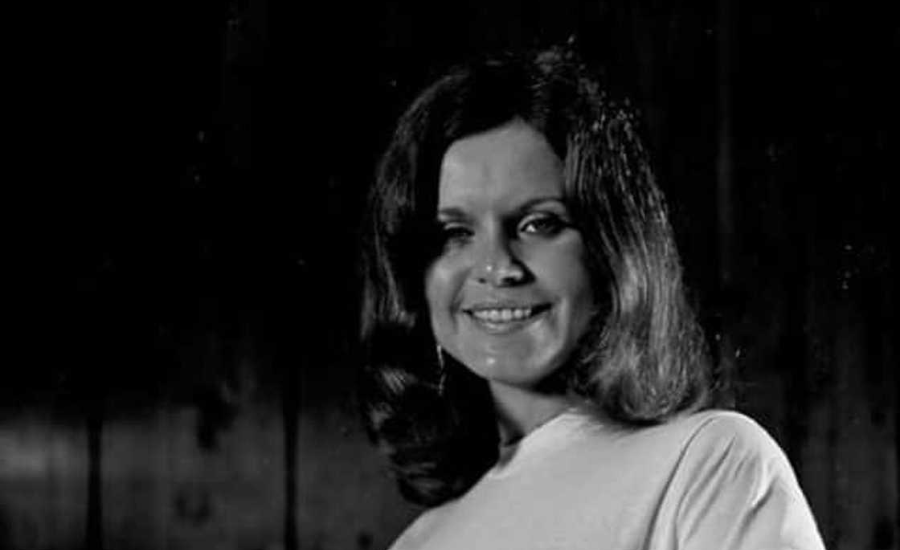
Barbara Roufs was known for her vibrant presence in the world of drag racing, but when it came to her personal life, she maintained a sense of privacy and discretion. She was married, though she rarely spoke publicly about her husband, preferring to keep their relationship out of the media spotlight. In an industry where public figures often found their personal lives under scrutiny, Barbara chose to draw a clear line between her professional achievements and her family life. This balance reflected her deep commitment to protecting her loved ones from the pressures of fame while focusing on her role as a trailblazer in the racing community.
One of the most cherished aspects of her private life was her role as a mother. Barbara had a daughter, Jet Dougherty, whom she lovingly raised while continuing to pursue her career in the racing industry. Despite the demanding nature of her work, she remained devoted to her child, ensuring that her personal responsibilities were never overshadowed by her public image. Her ability to juggle motherhood and a fast-paced career was a testament to her strength and resilience, demonstrating that she was not only a figure of glamour in drag racing but also a dedicated and nurturing parent.
Even as she gained widespread recognition, Barbara remained steadfast in keeping her family life away from public scrutiny. While her career in motorsports brought her fame and admiration, she never allowed it to define her completely. Instead, she focused on maintaining a life that balanced excitement and stability, ensuring that her legacy would be remembered not only for her contributions to racing but also for the grace with which she navigated both worlds.
Barbara Roufs’ Children: Jet Dougherty
Barbara Roufs was not only an iconic figure in the world of drag racing but also a devoted mother to her daughter, Jet Dougherty. Despite the excitement and recognition that came with her career, Barbara made it a priority to keep her family life private. She understood the importance of shielding her daughter from the public eye, ensuring that Jet could experience a sense of normalcy away from the fast-paced world of motorsports. This decision reflected Barbara’s deep love and commitment as a mother, choosing to protect her child’s privacy while managing her own growing fame.
Although little is publicly known about Jet Dougherty, it is evident that Barbara worked hard to create a stable and supportive environment for her. Unlike many public figures whose personal lives often become intertwined with their careers, Barbara remained steadfast in keeping her role as a mother separate from her professional persona. She carefully balanced the demands of her work with her responsibilities at home, ensuring that her daughter’s well-being always came first. This ability to navigate both worlds with grace is a testament to Barbara’s strength and dedication.
Following Barbara’s untimely passing, Jet has continued to honor her mother’s wish for privacy, choosing to stay out of the spotlight. While Barbara’s legacy lives on through her impact on drag racing, her greatest achievement was undoubtedly the love and care she provided for her daughter. Through her actions, she demonstrated that beyond the glamour and high-speed world of racing, her most important role was that of a mother who cherished and protected her child.
Barbara Roufs Professional Career
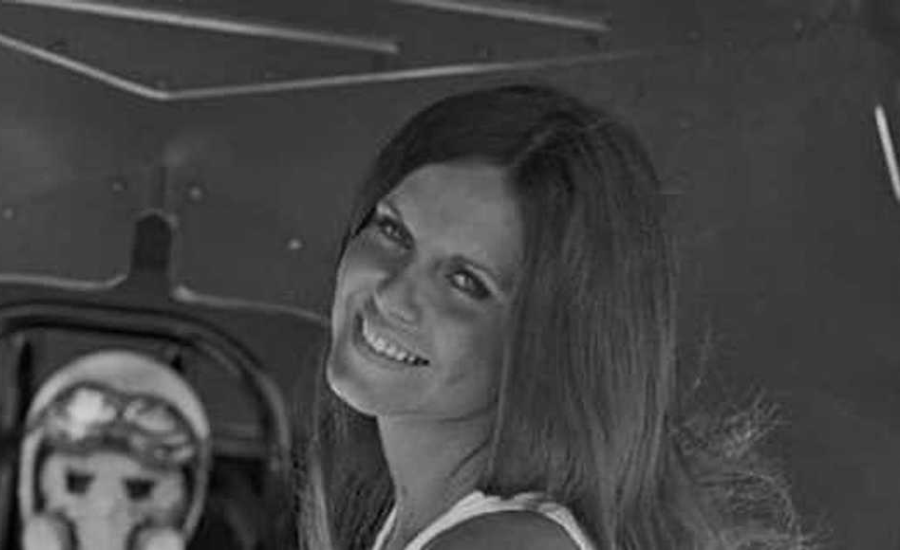
In the late 1960s and early 1970s, Barbara Roufs became a prominent figure in the drag racing community as a trophy girl, adding glamour and excitement to the high-speed world of motorsports. She gained widespread recognition at major events, including the 6th U.S. Professional Dragster Championship at Orange County International Raceway, where her presence captivated both fans and racers alike. In 1973, she earned the title of PDA (Professional Dragster Association) Queen, solidifying her status as a beloved icon within the racing world. Unlike many of her contemporaries, Barbara was older than most trophy girls, yet her charm, confidence, and infectious energy made her a fan favorite, proving that her appeal went beyond mere appearance.
Barbara’s striking looks and magnetic personality also caught the attention of manufacturers and advertisers who saw her as the perfect ambassador for their brands. Companies looking to market their products to drag racing enthusiasts frequently featured her in advertisements, promotional materials, and even branded T-shirts. Her image became synonymous with the sport, drawing in wider audiences and contributing to the growing popularity of drag racing.
During the 1970s, drag racing was undergoing a major transformation, evolving from its 1960s golden era into a sport driven by innovation and speed. As racers upgraded their vehicles with more powerful engines and advanced technology, Barbara played a crucial role in modernizing the sport’s image. Her presence on the track was more than ceremonial—she represented a shift in the culture of drag racing, where spectacle and personality became as important as the competition itself.
Barbara Roufs Cause Of Death
In 2016, renowned photographer Tom West shared a collection of photographs capturing Barbara Roufs in her early days as a trophy girl. These images, taken decades earlier, resurfaced online, reigniting interest in her legacy and bringing back memories of her time in the drag racing world. When her daughter, Jet Dougherty, came across the photos, she was both surprised and moved. She later shared a heartfelt message, acknowledging how many people had admired and cherished her mother during her lifetime. Seeing Barbara’s pictures preserved in history gave Jet a sense of pride, as they reflected some of her mother’s most joyful and vibrant moments.
Jet also took the opportunity to reveal a deeply personal and tragic part of Barbara’s story—her untimely passing in January 1991. At the age of 47, Barbara died by suicide, a revelation that saddened many fans who had fond memories of her lively and charismatic presence. While her death was officially ruled a suicide, there was no indication of foul play or criminal activity. The reasons behind her struggles remained unknown to the public, leaving those who admired her to remember her for the joy she brought to the racing community rather than the circumstances of her passing.
Before her death, Barbara had been living in Fresno, California, with her family. Despite the heartbreaking end to her life, her legacy as a trailblazer in drag racing and a beloved figure in motorsports continues to live on. Her influence on the sport, along with the unforgettable charm she brought to the racetrack, remains a cherished part of drag racing history. Through the rediscovery of her images, fans old and new can celebrate the vibrant spirit she exuded and the lasting mark she left on the world of racing.
Barbara Roufs’ Legacy
Barbara Roufs is remembered today not only for her contributions to drag racing but also for her influence on popular culture and the evolving role of women in sports. As a trophy girl, she brought charm, grace, and excitement to the racing world, but her presence went far beyond presenting awards. In a male-dominated industry, she became an icon, challenging traditional gender roles and paving the way for greater female visibility in motorsports. Her glamorous yet confident persona helped attract a broader audience to drag racing, making it more dynamic and engaging for fans.
Beyond the racetrack, Barbara’s story serves as a poignant reminder of the personal struggles that can exist behind the public image of a beloved figure. While she was admired for her energy and beauty, her life was more complex than what the public saw. Her legacy continues to spark conversations about gender representation in competitive sports and the challenges faced by women in traditionally male-centered arenas. Decades after her passing, she remains an inspiration, reminding the world of the impact one individual can have in breaking barriers and reshaping perceptions in sports and beyond.
Barbara Roufs’ Net Worth
During the 1970s, Barbara Roufs built a career as both a model and a drag race trophy girl, becoming a well-known figure in the racing world. While the earnings of trophy girls at the time were not widely documented, it is evident that Barbara found financial success through her work. Her striking appearance and captivating presence made her a sought-after figure at racing events, and she became a fan favorite. Her popularity extended beyond the racetrack, as her images were widely used in advertisements and promotional materials, further solidifying her status as a cultural icon.
Even decades after her time in the spotlight, Barbara’s legacy remains strong, with her vintage photographs from the 1970s still being sold through online retailers. These images continue to capture the essence of a transformative era in drag racing, keeping her memory alive for fans and collectors alike. Given her impact on the industry and the ongoing demand for her memorabilia, her estimated net worth is believed to be around $1.5 million, reflecting both her influence and the lasting value of her contributions to motorsports and pop culture.
FAQs About Barbara Roufs
1. Who was Barbara Roufs?
Barbara Roufs was a well-known trophy girl in 1970s drag racing, celebrated for her beauty, charm, and contributions to the sport’s evolving culture.
2. What made Barbara Roufs famous?
She gained recognition as a trophy girl at major drag racing events, particularly in the Professional Dragster Association (PDA). Her presence added excitement and glamour to the sport during a period of significant transformation.
3. What role did Barbara Roufs play in drag racing history?
She symbolized the shift in drag racing from the traditional 1960s style to a more modern and vibrant 1970s era. Her influence extended beyond the racetrack, shaping how women were represented in motorsports.
4. How did Barbara Roufs pass away?
She tragically passed away in January 1991 at the age of 47. Her death was ruled a suicide, though details remain limited.
5. What is Barbara Roufs’ legacy?
Her legacy lives on in drag racing history and pop culture, where she remains a nostalgic figure representing the golden era of the sport. She is remembered for her beauty, energy, and role in defining a new image for drag racing.
Conclusion
Barbara Roufs was more than just a trophy girl; she was an emblem of change in drag racing’s golden era. Her presence on the racetrack symbolized the energy and excitement of the 1970s, blending speed with glamour. Though her life ended in tragedy, her impact on the sport remains undeniable. Fans, racers, and historians continue to celebrate her contributions, ensuring that her name remains etched in the history of drag racing. Barbara Roufs will always be remembered as a trailblazer who added style, spirit, and excitement to the sport she loved.
Get the latest alerts and updates directly: Fife!
